
Korea
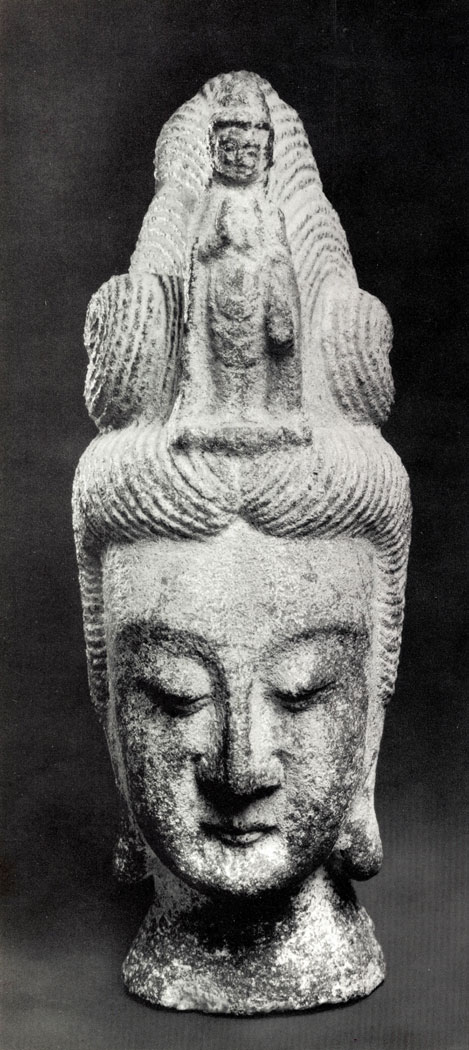
Bodhisattva Kwanym
Korea. 8th century
Granite.
Height 26.5 cm. Inv. No. 14739 I
Acquired in 1964 from a private collection.
Korean religious sculpture emerged at the time when Buddhism was spreading in the country. It is natural, therefore, that it reflected some of the already established Buddhist canons of Indian and Chinese sculpture. But at the same time Korean sculpture demonstrated characteristic features which manifested themselves in a deep, though somewhat abstract, spirituality of images. The stone head of Kwanym, the Buddhist deity of mercy, might have crowned a granite pillar or else been a fragment of a rock-cut sculpture. The sculptor chose a summary treatment, trying to emphasize the fortitude and power of the deity. Its figure succeeds admirably in combining the beauty of the features with the sense of tranquillity and pensiveness. The head of the deity is crowned with the traditional representation of Amitabha Buddha who, according to the Buddhist teaching, endowed Kwanym with spiritual power for the salvation of mankind.
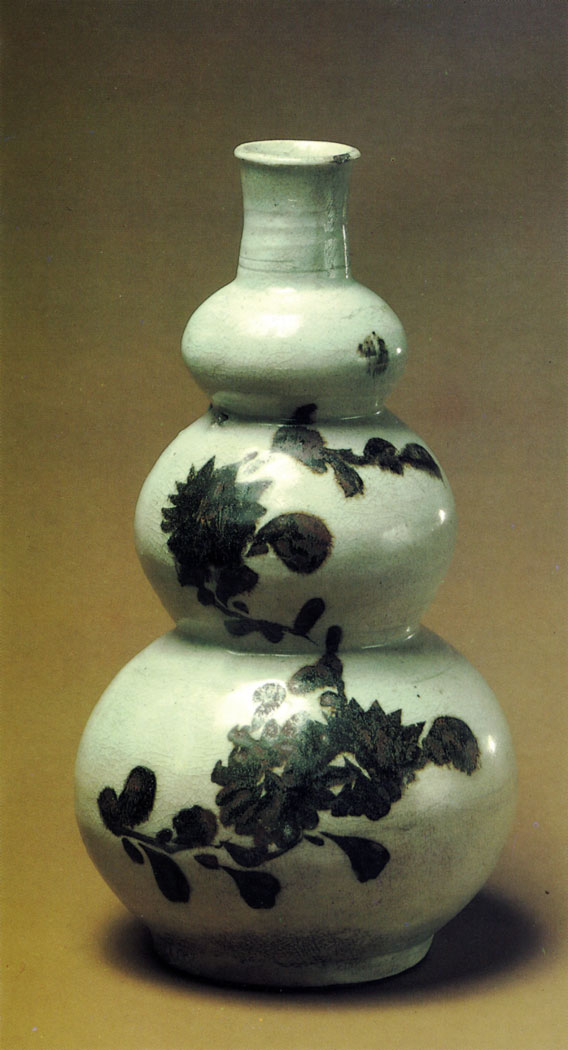
Vessel
Korea. 11th or 12th century
Clay, with black and white clay inlays.
Height 19.5 cm, diameter 11 cm. Inv. No. 10171 I
Acquired in 1953.
In the early 11 th century, the south of Korea became a centre of pottery-making. The then capital of Korea, Songdo (now Kaesong), was famous for its celadon wares. The surface of those articles was decorated with elaborate ornamental inlays of tiny pieces of black and white clay and then covered with a transparent glaze of delicate bluish and greenish tints. The shapes were simple, rather heavy-looking, conceived as a contrast to the lace-like pattern of the inlaid work. The commonest type of vessels was a pumpkin-shaped wine vessel decorated with plant motifs. This vessel is a rare example of such articles.
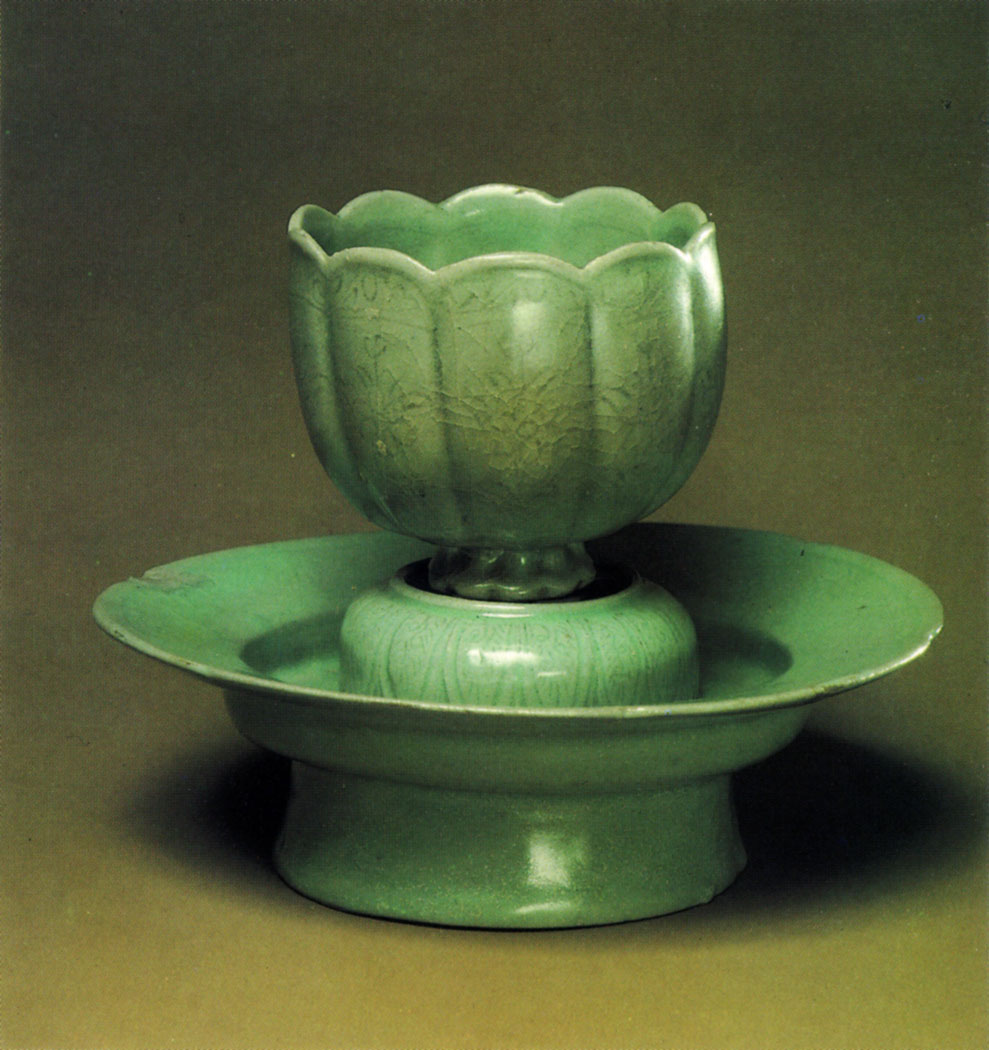
Wine cup
Korea. 11 th century
Glazed clay.
Height 15cm, diameter 18 cm. Inv. No. 10172 I
Acquired in 1953.
A fine example of medieval Korean ceramics, this cup was made by folk craftsmen during the Koryo period (918-1392)-the time when Korean pottery-making was at its height. It gives a clear idea of the national plastic arts where the sculptural clarity of naturalistically treated forms was regarded as one of the most important aesthetic principles. The body of the cup imitates a lotus-flower. It rests on a base with a rosette representing lotus leaves. A minutely engraved floral ornamentation covering the entire surface of the article shows through a thick coat of a celadon glaze. Korean craftsmen mastered a striking variety of its shades: from blue-grey to emerald-green. Due to this wealth of hues every article had an individual touch and looked different from the others.
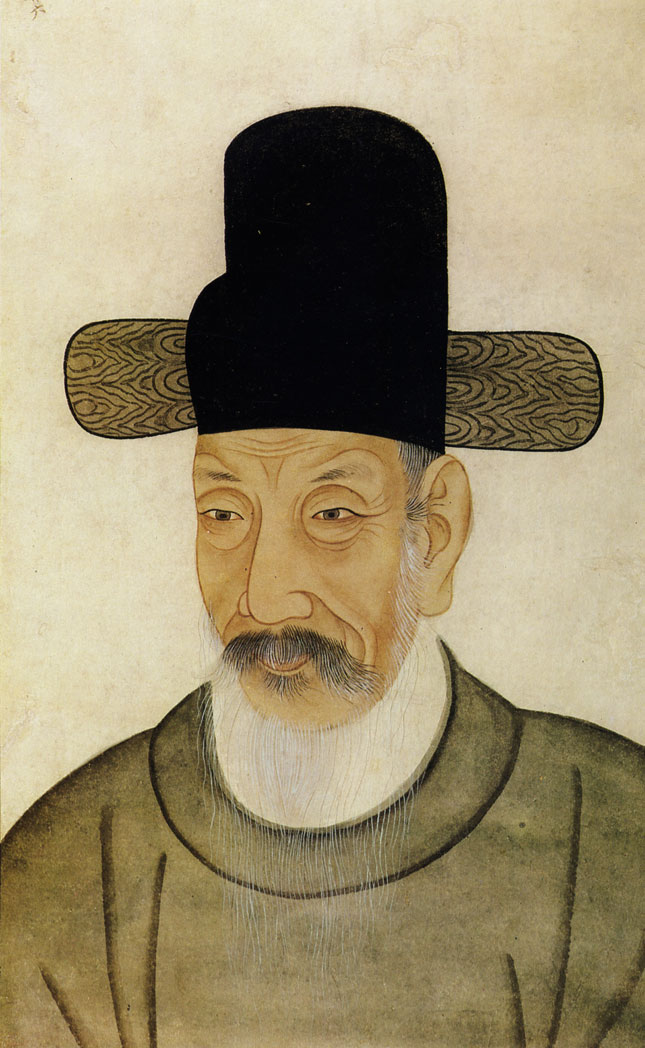
Portrait of a Dignitary
By anonymous artist. Korea. 16th century
Mineral pigments on paper.
32 × 20 cm. Inv. No. 2493 I
Received in 1928 from the Museum of Modern Western Art, Moscow.
Medieval Korean portrait-painting was strongly influenced by Chinese art. It adopted pictorial canons evolved in China during the rule of the Sung dynasty. This portrait of a Korean dignitary, the governor of a province, is the work of an unknown Korean artist. The model is represented in formal dress and traditional headwear. His posture is static, his face impenetrable. The portrait is not devoid of individual traits, yet the artist apparently concentrated on rendering certain general features of a high-ranking person-imperiousness, self-assurance, and strength of mind and character.
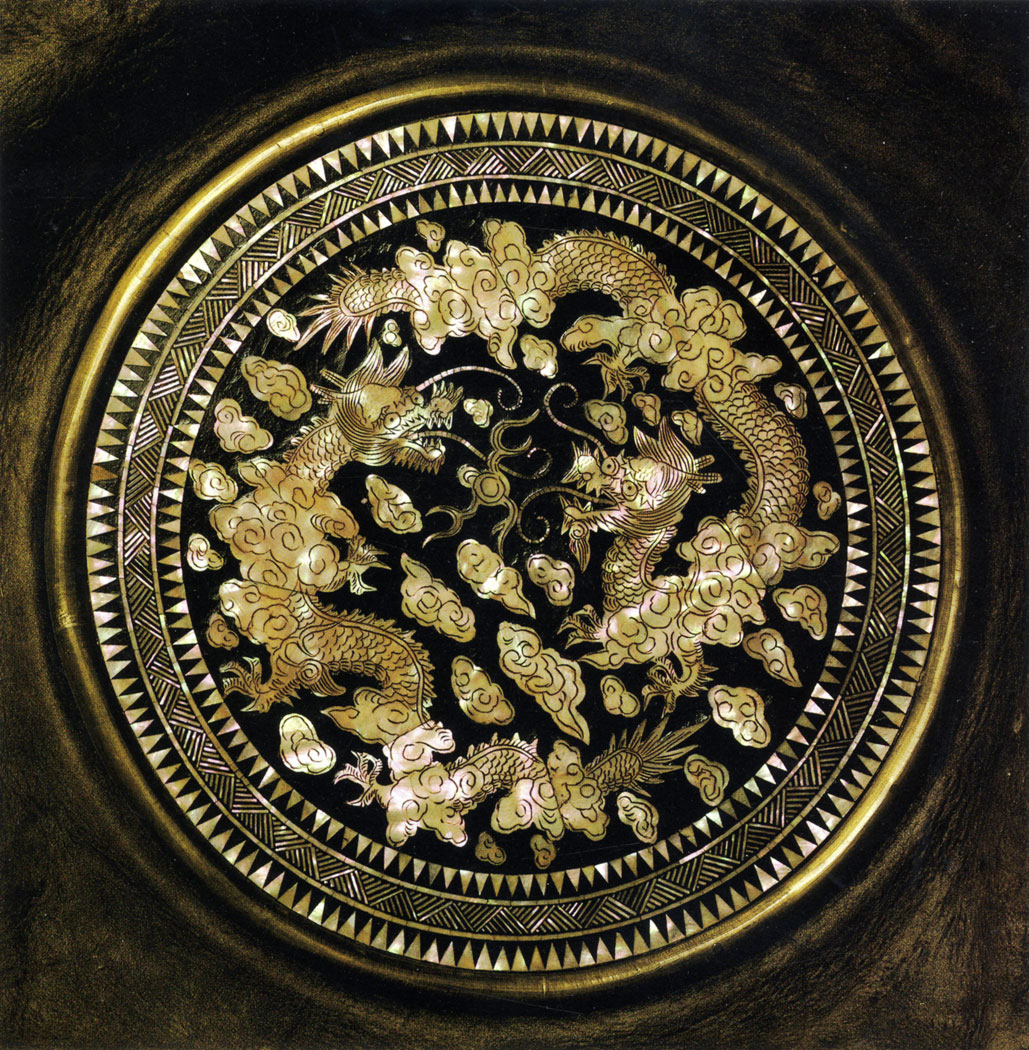
Panel
Korea. 19th century
Wood, inlaid with mother-of-pearl and lacquered.
Height 4 cm, diameter 20 cm. Inv. No. 12276 I
Acquired in 1952 from a private collection. First publication.
Lacquer objects appeared in Korea as early as the first centuries AD, but the earliest examples have not survived. Excavations led to the discovery of some fragments of lacquer articles with an elaborate decorative painting dating back to the 5th and 6th centuries. The craft reached its height in the 18th and 19th centuries. The articles produced at that time were light and durable, coloured in red or black, plain or decorated with painting, engraving or inlaid work. They ranged widely from vases and trays of all kinds to boxes and furniture items. The kei-san varnish-trees, whose sap served as the basis for the lacquer, were cultivated in Techen province, in the north of the country. The natural lacquer was coloured red, black, etc. The Korean technique of mother-of-pearl inlays on black lacquer was called "najon". It consisted in the following: with the help of fish-glue mixed with cooked rice, pieces of mother-of-pearl were fixed onto a thin hemp cloth stretched on a wooden foundation and coated with black lacquer. After drying, the surface of the article was covered with several coats of black lacquer so that the mother-of-pearl design disappeared under it and emerged again only after a long and thorough polishing. To finish off, the article was covered with several coats of transparent varnish, though it was carefully removed from the plates of mother-of-pearl.
Among the most interesting exhibits in the collection of Korean lacquers is this black panel with two inlaid dragons. The simple shape of the bowl is beautifully set off by a fine pattern made of tiny bits of mother-of-pearl.
|
ПОИСК:
|
© MUSEUMS.ARTYX.RU, 2001-2021
При использовании материалов сайта активная ссылка обязательна:
http://museums.artyx.ru/ 'Музеи мира'
При использовании материалов сайта активная ссылка обязательна:
http://museums.artyx.ru/ 'Музеи мира'